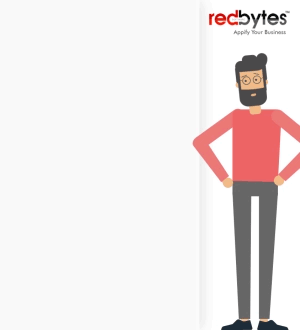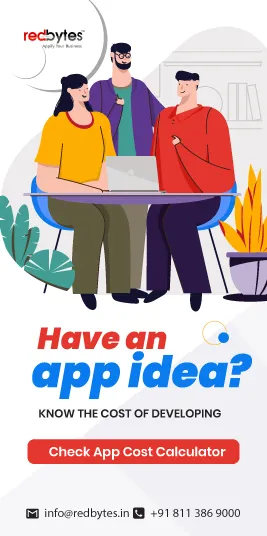In the arena of mobile app development, there are numerous frameworks claiming to win the battle, Flutter proposing a sweet toast for businesses wishing to chase the dream of being an ace in niche market.

Businesses in modern times must filter their choices about mobile technologies through pragmatic evaluation and unbiased testing. The best framework is the one that fulfills all-round expectations, including device-agnostic performance, simplicity, process agility, smooth user experience and future scalability.
Cross-platform technologies may sound thinkable though using them often becomes wearisome and they often fall behind in UX compare to native apps.
Read Also: 11 Top Mobile App Development Frameworks 2023
In recent years, amid leading frameworks like React Native, Xamarin and AgularJS, Flutter has stood out in delivering fast and reliable digital interactions.
At its core, Flutter appears like a clever blend of various Google technologies and features, and the Dart-based concept practically works.
We bring you in this post all the gist on why enterprises and mobile app developers should consider Flutter in 2023.
1) Gradle Build Time optimized for faster development cycle
Despite being the most critical in the entire Android app development process, Gradle build tool poses severe challenges when it comes to maintaining agility of the development cycle Android apps.
The build time is typically quite extensive and tiring, hampering the organic speed of the process.
Although Flutter does require Gradle build to obtain sheer advantage in Android app development, the requirement is not as frequent as Native Android apps.
In Flutter-based app development, Gradle build is called for only in the beginning for the first time and not needed at the time of an app restart.
Android studio users may experience improved Gradle build time. However, due to more optimized Gradle build time in Flutter mobile applications, Flutter developers have the benefit of reduced load time which considerably overshadows Native load time.
2) Flutter redefines cross-platform development
One of the biggest hurdles for cross-platform developers is laboring through the traditional cross-platform approach that compels them to create multiple versions of the same mobile app.
The limitation here is that user experience does not always match what native application inherently offers, and the disappointment is attributed to JavaScript-based UX.
With Flutter, developers can easily benefit from its “write once and run anywhere” approach and eliminate the problem of annoying lagging, that’s why mobile app developers consider it.
Flutter is Ahead of Time compiled and machine binary executable unlike Just in Time compiled JS user experience. Flutter thus helps overcome usual limitations involved in cross-platform approach, improve app performance and delivers native-like experience.
3) Liberates you from juggling between Backend and Frontend
Flutter also impacts the language barrier Android developers traditionally face when shaping backend and front layout. In native environment, you have separate layout and Kotlin/Java files and need to get references for the views before updating the change in backend system.
Flutter has reactive framework that brushes aside the need for getting references to the widgets, and facilitates a common single language for structuring the backend – being another great reason for developers to move to Google’s Flutter.
4) Boosts developer productivity exponentially
In radical structure of mobile app development with Android studio, developers encounter annoying wait time if they have to see the modifications and changes they make to the state of structure of an app.
Flutter seems to have revolutionized this with “Stateful hot reload” and “Hot restart”. These feature together adds never-before-seen momentum to the task of developers as they can check the changes reflected in the app within a second.
Gradle rebuild has so far been a major culprit in slacking off the pace of Android developers with every modification. Without spending time on running Gradle build, you see changes as soon as you commit.

The learning curve involved in “hot reload” also remains leanest as modifications are implemented immediately as you save by default. This goes to suggest that Flutter helps slash the development time down by 30–40%.
5) Dart gets you the best of Multiple Languages
Recently emerged mobile frameworks (React Native, Angular JS, Xamarin) can all help create digital experiences with ease. However, the differentiating factor while choosing the best often comes down to speed, performance and quality.
These frameworks usually depend on Java as a core language which is still a little far from being perfect.
Built with Dart (Google’s in-house programming language), Flutter is a right cohesion of various Google technologies and gives you the best features from multiple languages without neglecting Java awareness.
Flutter has access to the Skia graphics library and Google’s Material design specifications. The approach of Flutter, thus, yields a powerful mobile framework that eventually makes the development process fluid – which pleases developers and profits businesses that invest in Flutter development.
Read Also: New Technology Trends Drive the Mobile App Sector
6) Ease and speed of Animation design
Flutter in its live event held in 2018 introduced an incredible tool: 2Dimension Flare. With this, Flutter simplifies, optimizes and accelerates animation and UI creation in app development.
It started allowing animation loading at 60FPS speed, which is extraordinary in its league of contemporary frameworks.
The simplicity of creating great animations together with lean learning curve shrinks the gap between the UI designer and the developer.
The process ultimately reduces the time required to implement modifications pertaining to UI or animations.

7) Out-of-the-box design experience
As we saw earlier, Flutter is a rich hodgepodge of best features derived from multiple languages and gives you the access to its Material Design specification.
This means developers find it easy to build impressive UI experience that feels smooth, seamless and crisp – something that resembles native applications.
In addition, to enable native feel for iOS devices (iPhone and iPad), Flutter provides widgets to implement Human Interface design specification that speaks of unforeseen out-of-the-box design experience.
8) Flutter effortlessly supports diverse IDEs
As you start coding with Flutter, it is normal, even expected, to feel compulsive to switch from Android Studio to a number of other Integrated Development Environments.
The Flutter Live supports Visual code used by lots of existing Flutter developers. The advantage Flutter’s VS code gives you is its capability to enable light-weight and faster and many pleasant features commonly available in Android Studio and IntelliJ.
You can almost think of any IDE to work with or prefer to keep up with the existing one since Flutter embraces them all.
9) Open source packages unleashed
Further, to allow developers to efficiently create apps, Flutter unlocks an ample set of open-source packages that are generously available in app development.
This specific feature helps make many technically complicated tasks look quite easier. The open-source package library might still be incipient but is thriving exponentially every coming day.
The credit goes to ever-growing lush community developers onerously contributing to Flutter framework.
10) Everything is a Widget
Everything you see in Flutter is a widget as suggested by the Flutter documentation online resources. They are the Appbar, Drawer, Snackbar, Scaffold, etc.
To execute multiple functions and tasks such as wrapping one widget inside another or wrap it in a Centre widget to center elements. “Everything is a widget” basically ensures Flutter users get easy experience independent of the platform they use.
11) Code Magic CI tool is optimized to work with Flutter
The Flutter Live event in 2018 revealed the open-source tool called Code Magic – which is highly sophisticated, well-optimized CI tool that works best with Flutter.
The tool makes sure the build process is seamless. It is free and does not impose heavy learning curve.
12) Diligent and active Flutter Community
Without having reliable support from active user community and constant contributors, it is difficult to imagine flourishing success of a newly introduced mobile technology.
Flutter does not culminate and has instead grown in leaps and bounds since its glorious inception because of tireless efforts and support from Flutter team of developers who remain available to address all kinds of queries.
These real people also provide live assistance at virtual Q&A meetings and help resolve your questions. Some of them are big names and you can learn a great deal from them even when you are deprived of questions and just heed at what they discuss.
Read Also: App Development Cost-Design, Development, Deployment
Short remarks
We can draw some evident conclusions from the above discussion on how Flutter could be the framework of choice if you want to build mobile apps for your business.

First, it helps quiet down the maximum shortcomings that developers encounter working on other cross-platform technologies.
Second, Android and iOS developers can easily create apps that feel close to native and are smooth, simple in use and intuitive. Above all, it is clear that companies jeopardize their business outcome once they fail to produce apps that are crisp and user-friendly. This is why most of the mobile app development focus on Flutter












